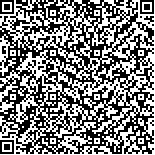| 本文已被:浏览 2593次 下载 1886次 |

码上扫一扫! |
|
|
| 西南大西洋阿根廷滑柔鱼耳石微结构及生长特性 |
|
陆化杰1,2,3, 陈新军1,2,3, 方舟1, 刘必林1,2,3
|
|
1.上海海洋大学海洋科学学院, 201306;2.大洋生物资源开发和利用上海市高校重点实验室, 上海 201306;3.大洋渔业资源可持续开发省部共建教育部重点实验室, 上海 201306
|
|
| 摘要: |
| 根据我国鱿钓船2007、2008和2010年在西南大西洋作业期间采集的3 462尾阿根廷滑柔鱼样本(其中2007年308尾、2008年262尾、2010年2 892尾),测量了491枚耳石外部形态参数和耳石重量(雌性274枚、雄性217枚),结合耳石的日轮,对耳石微结构及其生长特性进行了研究。结果表明, 阿根廷滑柔鱼耳石的生长纹由明暗相间的环纹组成,耳石中心为黑色,呈水滴形;从核心到侧区边缘,轮纹宽度由窄至宽,亮度由明至暗;侧区到北区边缘,轮纹则由宽至窄,亮度由暗至明。根据生长纹的宽度和颜色的明暗,可将整个耳石分为3个区域,即后核心区、暗区、外围区。不同群体间耳石总长(TSL)和最大宽度(MW)的生长存在显著性差异, 但性别间无差异。冬季产卵群TSL和MW的生长适合用线性函数表示,秋季产卵群则适合用对数函数表示。耳石重量(SW)的生长存在群体和性别间差异,冬季产卵群雌、雄个体SW的生长分别适合用幂函数和指数函数表示,秋季产卵群则分别适合用指数函数和对数函数表示。两个群体的TSL、MW、绝对生长率和相对生长率都随着日龄的增加而先增加后减小,而 SW的绝对生长率则随着年龄增加而增加,相对生长率则随着年龄增加而先增加后减小。同一年龄段内冬季产卵群的绝对和相对生长率基本上都大于秋季产卵群,雌性个体的绝对和相对生长率要大于雄性个体。 |
| 关键词: 阿根廷滑柔鱼 耳石微结构 耳石生长 生长率 西南大西洋 |
| DOI: |
| 分类号: |
| 基金项目:国家自然科学基金(NSFC40876090)、上海市优秀学科带头人计划(10XD1402000)、曙光计划跟踪项目(08GG14)和上海市捕捞学重点学科(S30702) |
|
| Statolith microstructure and growth characteristics of Illex argentinus in the southwest Atlantic Ocean |
|
|
| Abstract: |
| Statolith microstructure and growth characteristics were studied in 491 specimens (274 females and 217 males) of short-fin squid Illex argentinus collected by the Chinese jigging fishing fleet in 2007, 2008 and 2010. The results showed that growth increments of I. argentinus consisted of light and dark lines, with the initial point of increment formation (focus) being dark and like a drip of water. The growth increments were narrow to wide, light to dark from the focus to lateral dome, and were wide to narrow, dark to light form lateral dome to dorsal dome. Three zones (postnuclear, dark zone and peripheral zone) occurred in statolith dorsal dome. The results of principal component analysis on ten morphologic indices showed that total statolith length (TSL) and maximum width (MW) could be used to distinguish between different groups. There was no sexual dimorphism in the TSL and MW growth between different groups, and the relationship between age and TSL and MW were best described by linear functions for austral winter group and by logarithm functions for austral autumn group, respectively. However, there was a sexual dimorphism in the statolith weight (SW) between different groups, and the relationship between age and SW for females and males were best described by power and exponential functions for austral winter group and by exponential and logarithm functions for austral autumn group, respectively. The absolute growth rate (AGR) and instantaneous relative growth rate (IRGR) of TSL and MW tended to be high at young stages, and then decreased when the age increased. However, the AGR of SW tended to be higher with the increased age, and the IRGR of SW increased in the beginning and then decreased when age increased. The growth rate of austral winter group was higher than austral autumn group, and the growth rate of females was higher than males at the same age. |
| Key words: Illex argentinus Microstructure of statolith Statolith growth Growth rate Southwest Atlantic Ocean |